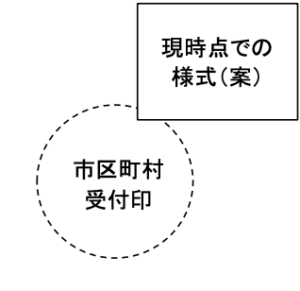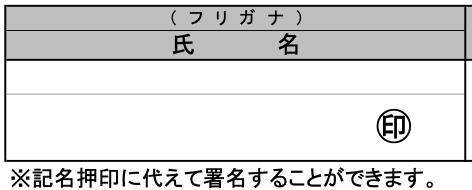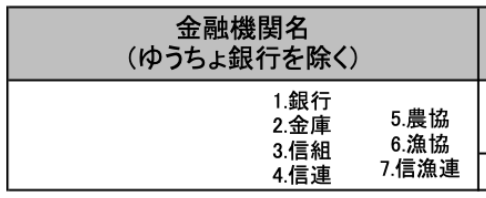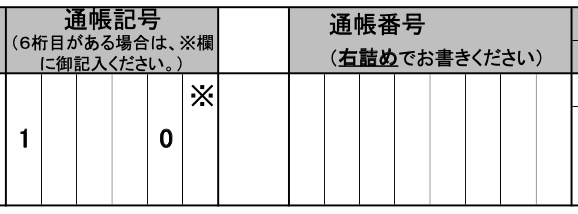Municipal governments across Japan are getting ready to send out applications for the ¥100,000 fixed payment for COVID-19 relief. Foreign residents can apply for the payout as long as they have a valid residence card.
As to be expected, the form will be completely in Japanese, so here’s a translation of the draft application and a guide to how to fill it out.
To apply online, you’ll need your My Number Card—and not just the paper notification card, but the plastic one with an identifying photo and embedded chip.
For more information on the relief payment itself check our in-depth overview. In that post, you can also find out whether you’re eligible for payment from your home country.
Use the links below to jump to each section
When will I get the form and payment
How to fill out the application form
When will I get the form and the payment?
When your form will arrive, and the payment transferred depends on where you live. For those in Tokyo, here’s a handy translated table outlining when each ward announced they’ll begin sending out forms. Generally, forms will be sent between mid-May to early June.
For those living outside of Tokyo, the Ministry of Internal Affairs and Communication has a listing of the timeframe for when municipalities will be sending out applications online (in Japanese only).
Your local ward office will be sending the application form to the residential address listed on your Residence Card, so be sure it’s up to date.
Apply online
You can apply online via the My Number Portal Site and some municipalities have already begun accepting applications. The system is only in Japanese, but you can use an auto-translate plug-in on your browser to navigate the platform.
To apply online, you’ll need your My Number Card—and not just the paper notification card, but the plastic one with an identifying photo and embedded chip. You’ll also need the PIN and password for the card (don’t get it wrong more than five times, or you’ll be locked out of your account). There are details on how to get the card in English on the My Number website.
You’ll also need the My Number app for desktop or smartphone, bank details, and proof of bank account. You can use your phone to scan the card as part of the application process, but if you receive a “Scan Failed” notification more than five times, you’ll also be locked out of your account and will have to wait for the paper form to apply.
How to fill out the application form
There’s no word as to whether English options will be available, but don’t count on it. Here’s a break down of the form with a translation from Japanese to English and step-by-step details.
Note, this application is based on the draft that was released on April 20th by the Ministry of Internal Affairs, so the final version could be subject to change, but we’ll be sure to update you if that’s the case.

At the very top of the page you’ll see text that says: <特別定額給付金の申請は、本申請書の郵送のほか、マイナポータル上でのオンライン申請も可能です>
It’s just saying that this is a form to apply for the “fixed benefit payment” and that you can mail in this application or apply online via the My Number Portal site.
Underneath that, it says <特別定額給付金申請書> or Fixed Benefit Application. Next you’ll see:
You don’t have to do anything here, the rectangle just says the version we’re showing is a draft and the circle is a space for the local government office to stamp once they’ve received your application.
Step 1) Date and location
To the left side of the form, you’ll find an application date box, this is where your work begins.
申請日 – Application Date
Fill in the box with the date you applied.
Note 令和 is Reiwa, the current emperor’s year, so write “2” after this as it’s the second year of Reiwa. Month (月), and day (日) follow.
For example, if you were filling this out on May 13, you would write:
令和 2 年 5月 13日
令和2年4月27日時点の住民票所在市区町村 – Your address as of April 27
Under this grey boxed text, write the name of the municipality in which you live as of April 27. It’s the address on your residence card. For example, if you live in Shibuya, you would write: 渋谷区 or SHIBUYA-KU.
Step 2) Head of household information
世帯主(申請・受給者) – Head of household
These are the details of the person who will be receiving the payment as head of the household. If you live by yourself, that’s you.
氏名 – Full name
Write your name here, also write it in furigana (which is the katakana pronunciation of your name).
印 – Hanko
If you have a hanko (like the Japanese version of a signature) stamp it over this little circle. If not, put your official signature here.
生年月日 – Birthdate
Fill in the head of the household’s birthday here, using the Japanese date format of year (年), month (月), day (日).
The birth year is based on the Japanese calendar for different eras:
明治(Meiji 1868-1912)
大正(Taisho 1912-1926)
昭和(Showa 1926-1989)
平成(Heisei 1989-2019)
You can convert your birth year into the Japanese calendar here.
For example, if your birthday is March 1, 1985 you would circle 昭和(Showa) and write 60 年 3 月 1 日.
現住所 – Current address
Write your address in the white space above the text.
日中に連絡可能な電話番号 – Daytime phone number
The best phone number to reach you during the day.
Step 3) Conditions
Here you’re agreeing to the conditions of the application which are as follows:
(1) The municipal government may check public records to ensure you’re eligible for the payment.
(2) If the municipality cannot confirm your eligibility, you may be required to submit additional documents.
(3) If the municipal government is unable to complete the transfers to your nominated bank account—or that of the person accepting the payment—within three months of the receipt of the application, the application will be considered as withdrawn.
(4) If you receive the payment from another municipality, you must return it.
Step 4) Check recipient information
給付対象者(下記の記載内容を御確認ください。もし記載に誤りがあれば、朱書きで訂正してください) – Recipients (Please check the information below. If there is an error, please correct it in red.)
The form will already have the details of the household on it, including the full names of everyone in your household, the date of birth, and relationship to the head of the household.
The image above is a reference for example:
世帯主: Head of household
妻: Wife
子: Child
合計金額 – Total Amount
This is the amount that will be paid to your household. It should be ¥100,000 per person (including children), so if you have three people in your household, it will be ¥300,000.
特別定額給付金を希望されない方につきましては、以下の チェック欄(□)に×印を御記入ください。- If you do not wish to receive the payment, please enter an X in the checkbox below.
Next to the names in the box to the right, you’ll see a column of checkboxes. If for whatever reason someone in the household doesn’t want to receive the ¥100,000 payment, they can mark an “X” in the box next to their name.
Step 5) Select payment method
受取方法 (希望する受取方法(下記のA又はB)のチェック欄(□)に『✔』を入れて、必要事項を御記入ください。) – Check Box A or B to select how you would like to receive payment
If you want the payment deposited into your account, check box “A.” We’ll give you more details on how to fill that out below, but let’s go through option “B” first, as it’s significantly shorter.
Option B—Collect the money in person
□ B 申請書を窓口で提出し、後日、給付(申請書の返送の必要はありません。) (金融機関の口座がない方や金融機関から著しく離れた場所に住んでいる方が対象となります。) – B Submit the application form at the (city/ward/town office) counter and receive your payment at a later date. (You do not need to return the application form by mail)
If you don’t have a Japanese bank account right now, or live too far away from your bank and are unable to access the cash, you might choose this option. It basically means your payment is on hold until a later date—when it’s safe to visit government offices again. Send off the form, then wait for notification from your municipal government who will contact you when it’s ok to come by and collect the money in person.
Option A—Have the money deposited into your bank account
□ A 指定の金融機関口座(申請・受給者又はその代理人の口座に限ります。)への振込を希望 – Check Box A: Transfer to designated financial institution account.
This is for the details of where the government can deposit the cash. You can only designate the bank account of the applicant (head of household).
□ この口座が当市区町村の水道料、地方税等の引落し又は払込みに現に使用している口座であって、申請・受給者の名義で ある場合(この場合は通帳やキャッシュカードのコピーを添付する必要はありません。) また、当該口座の確認について、水道部局、税部局等に照会を行うことを承諾します。- If the account you want to be paid into is the same account you use to make automatic withdrawals to pay your water/sewage bill and to pay your local inhabitants tax, then tick this box.
It means you don’t have to attach a copy of your ATM card, and you are also giving permission for the municipal government to check the records and confirm the account belongs to you.
(希望する口座) □ 水道料引落口座 □ 住民税等の引落口座 □ 児童手当受給口座 – Requested Account.
Here, select which account you use to designate which one the money will go into, meaning: Pay me in the account I use for…
水道料引落口座 – Water sewage auto withdrawal account
住民税等の引落口座 – Local inhabitant’s tax auto withdrawal account
児童手当受給口座 – Account where child allowance is received
If none of the above apply, you don’t have to check anything.
Step 6.1) Add bank account information (for non-Japan Post bank accounts)
If you chose box “A” here is where you must fill out all the banking information.
The top part is for all banks that aren’t Japan Post bank accounts (yucho ginko ゆうちょ銀行). If you have a Japan Post account then leave the top box blank and go to the next section.
Circle your financial institution type:
1. 銀行: Bank
2. 金庫: Deposit bank
3. 信組: Community bank
4. 信連: JA Bank
5. 農協: Agricultural Cooperative
6. 漁協: Fisheries Cooperative
7. 信漁連: Marine bank
支店名 – Branch Name
Fish out your bank book, it will have all the information you need to fill this part out.
Here, circle the branch type:
本店: Main office
支店: Branch office
本所: Main office
支所: Branch office
出張所: Branch office
支店コード Branch Code
This is a 3-digit number, you’ll find it in your bank book.
口座番号 (右詰めでお書きください。) – Bank Account Number
Fill in the squares, right-justified. Some account numbers have six digits while others have seven.
口座名義 – Account Holder
Write the name of the account holder, like earlier. Also write it in furigana.
Step 6.2) For Japan Post account holders
The system is a little different, so follow these instructions.
ゆうちょ銀行を選択された場合は、貯金通帳の見開き左上またはキャッシュカードに記載された記号・番号をお書きください。- If you choose Japan Post Bank, write the symbol or number that appears at the top left of your open bank book or on your cash card.
通帳記号 (6桁目がある場合は、※欄に御記入ください。) – Bank book symbol (If there is a sixth digit, please fill in the * column.)
通帳番号 (右詰めでお書きください) – Bank book number (Fill in the squares, right-justified).
Note: some numbers may be less than the eight-digit space, if your number is less than eight, just leave the spaces blank.
Step 7) Designate a proxy (optional)
[代理申請(受給)を行う場合]- If you’re applying to have a representative act on your behalf.
If you want someone else to receive the payment on your behalf, you’ll have to fill out the following. However, if you have no need to designate a proxy (which is the most common case) you can just ignore this section.
Using the same system as above, fill out the following in relation to the proxy including the details below.
代理人氏名 – Full name
代理人生年月日 – Birthdate (follow the same format noted in Step 2)
代理人住所 – Address
日中に連絡可能な電話番号 – Daytime phone number
上記の者を代理人と認め、特別定額給付金の ______ を委任します。- I hereby designate the above-mentioned person to be my agent in order to _________
Circle one of the following option:
申請・請求: Apply / request
受給: Receive payment
申請・請求及び受給: Apply/request and receive payment
世帯主氏名 – Full name of head of household.
Write the full name of the head of the household and stamp the hanko on 印. If you don’t have a hanko, you can sign over the circle.
Step 8) Attachment additional documents

On the back of the form you need to attach the following:
Top rectangle: Document proving the applicant’s identity (a copy of your residence card will do)
Bottom rectangle: Document verifying the bank account where you would like to receive payment (a copy of your bank book is ideal)
Step 9) Post
Post the form to your local municipal office and wait for all that money to roll in. You did it! Otsukare! The form will arrive with a pre-paid return envelope, so you shouldn’t need a stamp to send it back.
Be wary of scams!
According to The Consumer Affairs Agency, officials expect that there will be some scammers operating under the guise of this handout. Do not give any bank account or pin numbers to anyone requesting this information over the phone.
For more information on the handout and the Basic Resident Register, visit the Ministry of Internal Affairs and Communications website. There’s also an English FAQ available.
























This site is protected by reCAPTCHA - Privacy Policy - Terms of Service